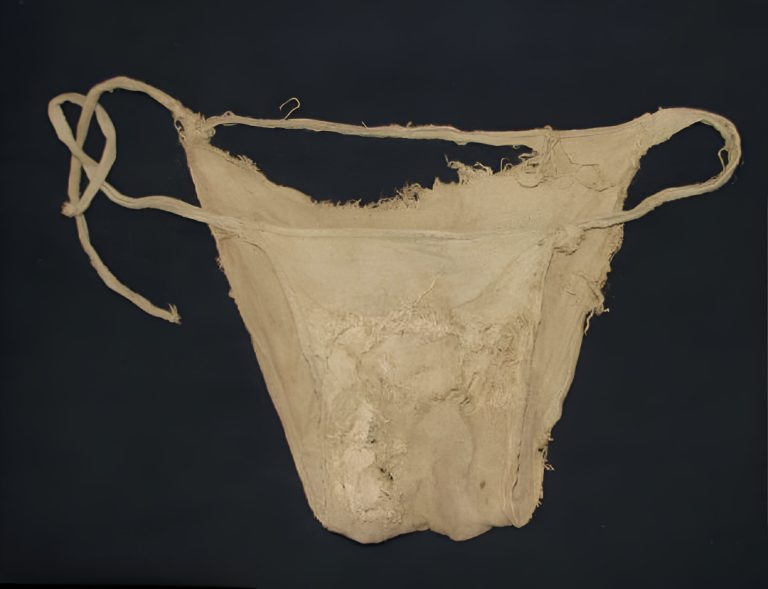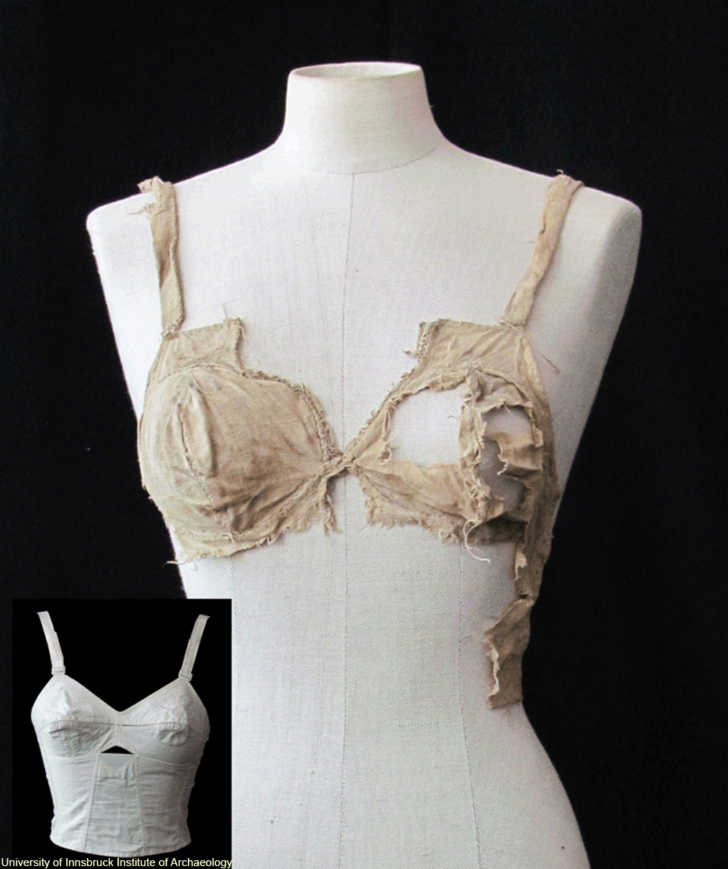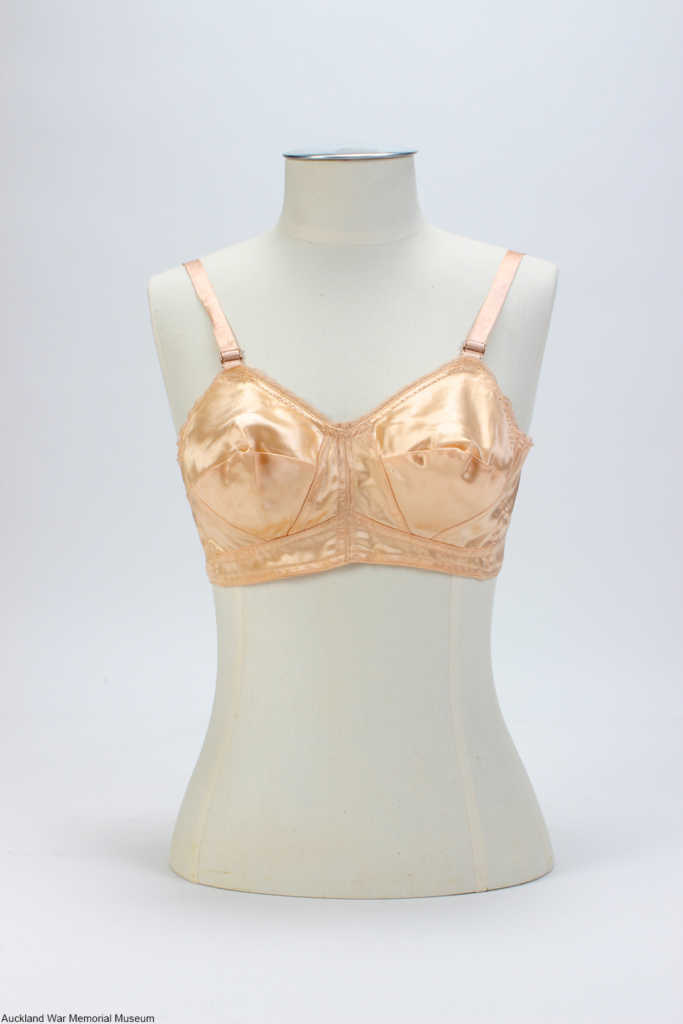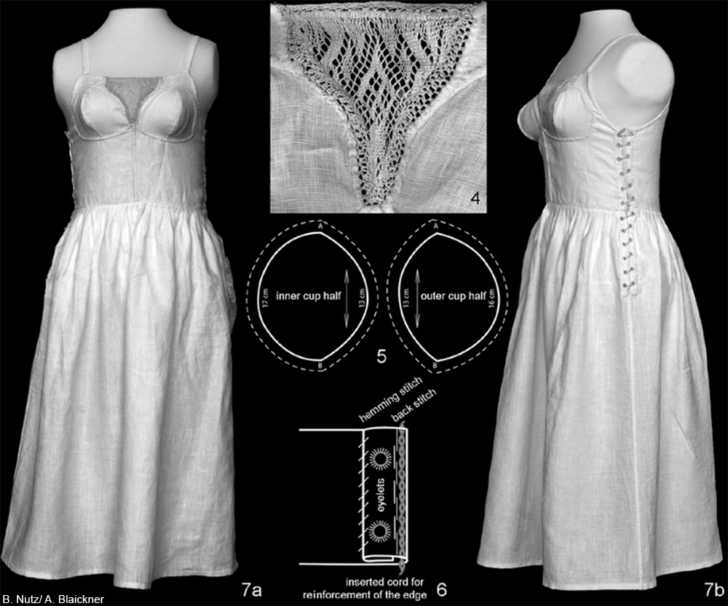The Forgotten Undergarment That Rewrites Fashion History
When archaeologists stumbled upon a hidden vault in an Austrian castle, they didn’t expect to uncover something that would shake the very foundation of fashion history. Among fragments of shoes, linen, and discarded garments was an artifact that looks surprisingly modern: a pair of men’s linen underwear. Found within the debris of Lengberg Castle in East Tyrol, this piece of clothing dates back to the 15th century. But the real revelation wasn’t just about men’s garments—it was about discovering that women’s bras are far older than we ever believed.

The Myth of the “Modern” Bra
Most of us imagine the bra as a 20th-century invention, a liberating replacement for the suffocating corsets of the Victorian and Edwardian eras. History books often frame bras as symbols of practicality and women’s emancipation, flourishing in the 1920s and 1930s. But this neat story crumbles when we examine the finds from Lengberg Castle. Archaeologists uncovered four linen bras that predated William Shakespeare by more than a century, proving that supportive undergarments existed as far back as the late Medieval period.
From Corsets to Bras: Rethinking the Timeline
For centuries, women relied on corsets to shape their silhouettes. From the inverted triangle styles of the 1600s to the Edwardian “S-bend” corsets, these garments were as much about fashion as they were about cultural expectations. The assumption has long been that bras emerged only when women finally shed these restrictive garments. Yet the Lengberg bras suggest otherwise: long before corsets dominated, women had already devised alternatives for both comfort and support.
Video : Medieval Underwear: Reconstructing the Lengberg Bra. (Part 1)
A Hidden Vault Reveals Its Secrets
Lengberg Castle, built in the 12th century, underwent renovations in 2008. During the work, construction crews unearthed a sealed vault on the second floor. Inside, researchers from the University of Innsbruck uncovered 2,700 fragments of medieval clothing and textiles. Preserved in layers of straw, dirt, and rubble were shoes, men’s linen briefs (akin to a modern bikini cut), and, astonishingly, bras. Radiocarbon dating confirmed their origins between 1390 and 1485 AD. These weren’t crude prototypes; they were sophisticated garments far ahead of their time.
What Did Medieval Bras Look Like?
The medieval bras bear a striking resemblance to their modern cousins. Made of linen, one even featured delicate lace trim—a design flourish historians believed did not appear on intimate garments until centuries later. Some of the bras had fabric extensions that resembled camisoles or crop tops, functioning as hybrids between bras and shirts. Think of them as the earliest versions of today’s bralettes—simple, supportive, and comfortable, but designed with care and style in mind.

Unlike the padded and underwired bras of today, these garments had no foam or structural inserts, yet they served the same essential purpose: providing lift, support, and modesty.
“Bags for the Breasts” – A Curious Name
Interestingly, written records from the era did not refer to these garments as bras. Instead, they were awkwardly called “bags for the breasts.” The now-familiar word “brassiere” didn’t enter common use until around 1900, borrowed from a Norman French term meaning “child’s shirt.” Until the Lengberg discovery, no physical evidence confirmed the existence of bras before the modern era. The castle vault changed everything.
Medieval Tailoring Ahead of Its Time
The Lengberg finds didn’t just reveal undergarments; they showcased advanced medieval tailoring techniques. Some of the dresses and linings used bias-cut fabrics, a sewing method that allows garments to stretch and drape gracefully. Remarkably, this technique wasn’t considered fashionable again until the 1930s. These discoveries suggest that medieval tailors possessed an understanding of fabric manipulation that rivaled later generations.
Video : Medieval Undergarments!
Why This Discovery Matters
Why does finding a bra from the 1400s matter? Because it fundamentally alters our understanding of fashion history. For decades, the narrative suggested that corsets ruled supreme until modern bras replaced them. Yet these finds prove that women sought alternatives to corsets centuries earlier, blending practicality with beauty in their clothing choices. The presence of lace hints that women valued style just as much as functionality, even in their most intimate garments.
Before Shakespeare, Before the Printing Press
To put things in perspective: these bras existed before Shakespeare was born, before Gutenberg’s printing press spread knowledge across Europe, and while Renaissance art and science were beginning to flourish. Imagine women of the late 1400s wearing garments strikingly similar to those we still use today, while Michelangelo painted ceilings and scholars redefined human knowledge. It’s a powerful reminder that history is rarely as straightforward as textbooks suggest.

The Long Evolution of the Bra
The medieval bras didn’t replace corsets overnight. Corsetry remained a dominant fashion force for centuries. But these garments represent an undocumented chapter in the evolution of women’s fashion. By the 1920s and 1930s, bras had become mainstream, mass-produced, and embraced as the liberating alternative to corsets. By the 1950s, structured bras with padding, underwires, and pointed cups embodied the dramatic “New Look” of postwar fashion. Yet the foundation for all of this was laid much earlier—hidden away in a castle in Tyrol.
A Legacy Woven Into Every Stitch
The Lengberg bras remind us that what we often consider “modern” may have roots stretching back hundreds of years. They also highlight women’s enduring pursuit of garments that balance comfort, practicality, and self-expression. Fashion is not just about appearance; it reflects the lived experiences of people navigating daily life in every era.

Conclusion: Rewriting Fashion History
The discovery at Lengberg Castle rewrote the story of women’s clothing. Long before corsets and long before the modern lingerie industry, women were already experimenting with designs that lifted, supported, and styled their bodies. These garments tell us that the bra is not a modern invention—it’s a 600-year-old story of innovation and style.
So, the next time you think of the bra as a symbol of modernity, remember this: women in medieval Austria were already wearing them while the Renaissance was still in its infancy. History always has secrets—and sometimes, even the most ordinary objects carry extraordinary stories.